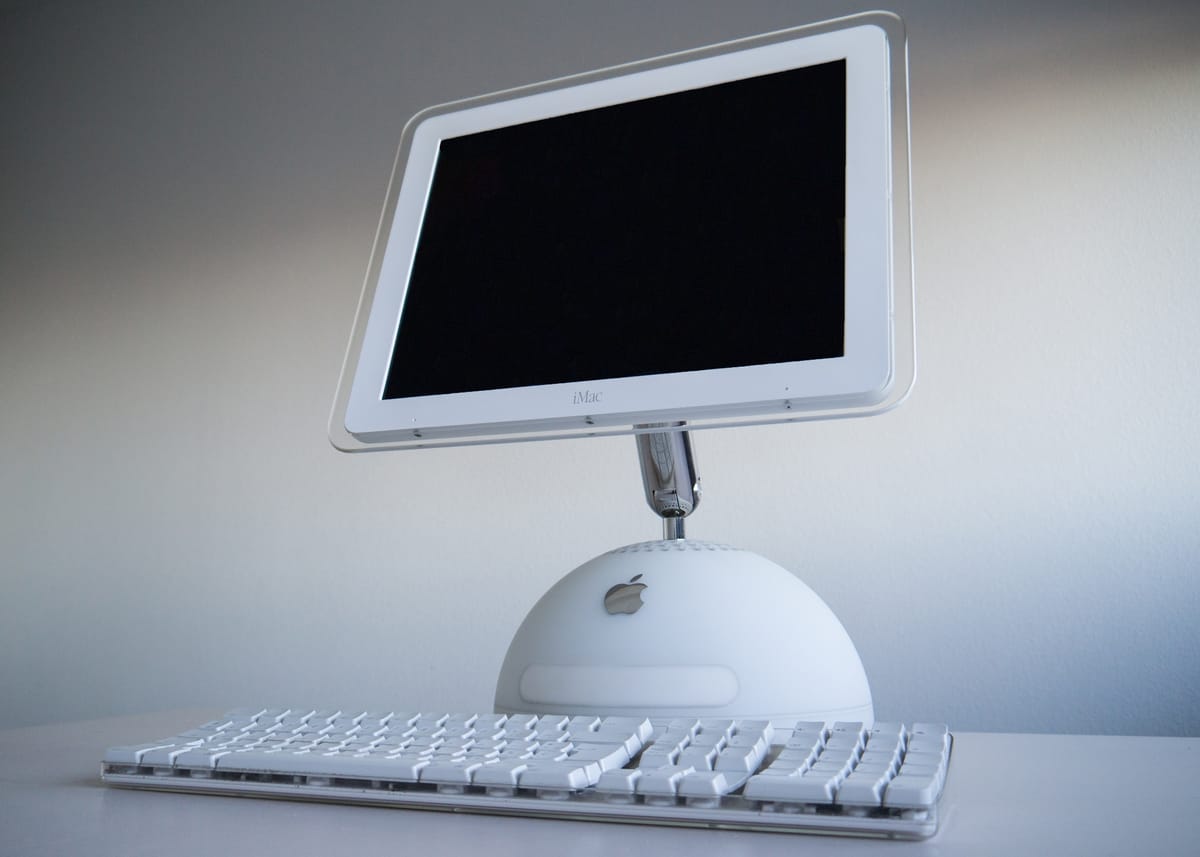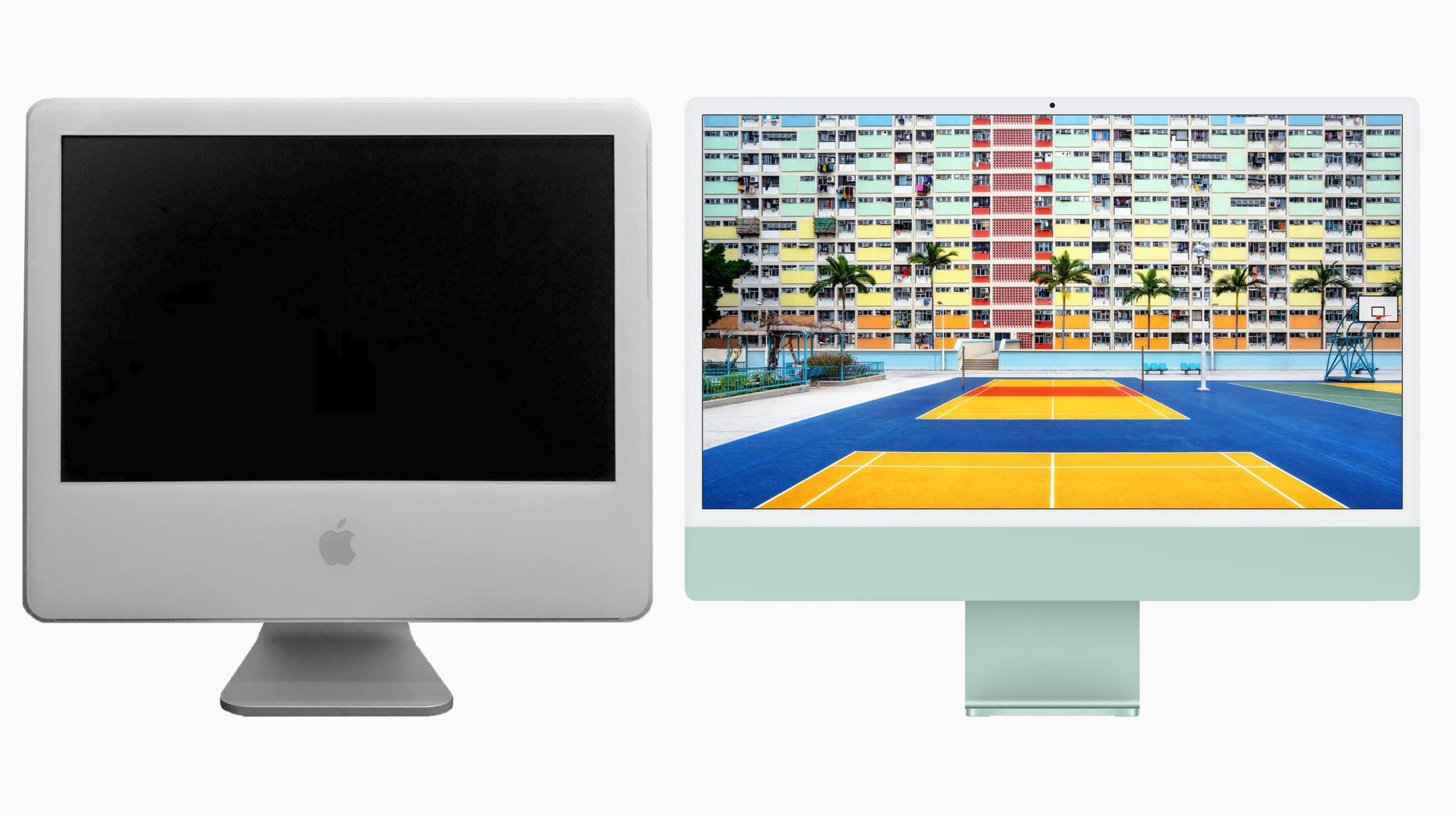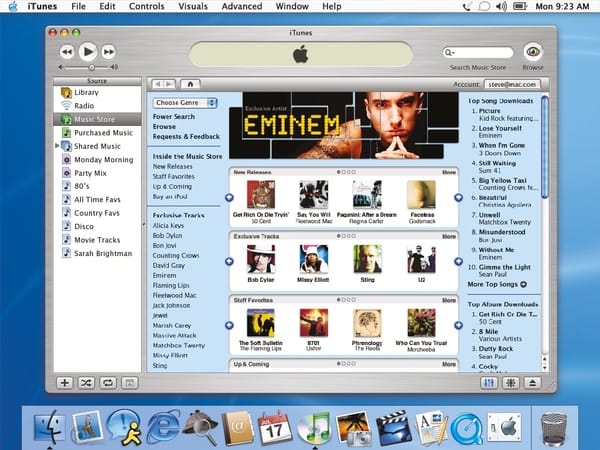The best iMac lived an oddly short life
The original Bondi Blue iMac is 25 today, but it’s not my favorite iMac.

25 years ago today, Apple introduced one of the most famous computers of all time: the iMac. The rounded shape, the translucent plastic, the Bondi Blue color scheme… you can probably picture every part of its iconic design in your mind right now. It was a statement of intent from Steve Jobs’ new Apple, it made a star out of Jony Ive and it redefined what a computer could look like.
And so there were high expectations for the next iMac, one that needed a radical redesign to accommodate a flat-panel LCD display instead of the bulky old “tube” CRT display of the original. As he unveiled the iMac G4 in 2002, Steve Jobs boasted: “It has a beauty and a grace that’s going to last the next decade.”
At first glance, you can see why. Just as its predecessor broke new ground, the iMac G4 looked nothing like any other computer.
The computer itself was contained in an oddly small, snow-white dome; contrasting with the dome’s curves was a simple, white-bordered rectangular screen above it. From the front, the screen appears to float. From behind, the secret was revealed, but it was still no less impressive: a thick metallic arm held the screen up in a manner that was both sturdy and flexible, able to hold it in place but also swivel, twist and move at the lightest touch.

“Let each element be true to itself,” said Jobs: let the flat screen be flat, unencumbered by slapping a computer to the back of the screen. And let the computer sit horizontally, putting the disc drive in front of you and the ports in easy reach.
It was a bold, distinctive and extremely memorable design. But despite Jobs’ boast, it did not last a decade — it lasted just two-and-a-half years before Apple replaced it with the iMac G5 in 2004.
In a sense, the iMac G5’s design is far more successful than the G4: today’s iMac is far sleeker and more modern, but It effectively has the same design as the iMac G5. Every iMac since 2004 has carried on with the base form of a slim, curved metal stand holding up a screen with a prominent chin below and a computer attached to the back. A design that Jobs referred to as a “fatal flaw” in 2002 — one that does not “let each element be true to itself” — has been the default form of Apple’s most successful desktop computer for almost two decades.

And yet, when I think of the iMac, it’s the iMac G4 that I remember most fondly. Part of that is because there’s never really been a computer like it, either before or since. But mostly it’s because the design is just so wonderfully playful.
The design was derided for looking like a lamp. But no lamp was ever this fun, or this tactile. The “floating” screen has a transparent plastic border on all sides that serves as a handle — and an invitation. It begs to be touched, to be moved, to be played around with. Do you have to bring it closer to read that bit of text? No, you don’t. But you want to. Do you have to push it towards your sister to show off your latest work? No. But you want to. You really want to.
I’ve always been a Mac user, and one of the reasons for that was that sense of playfulness. Well before the iMac, the original Macs came with MacPaint and a mouse — and that’s all five-year-old me needed to be entertained for hours. In a world of text-based DOS prompts and AUTOEXEC.BAT files, the Mac was intuitive and friendly. Want to throw something away? Put it in the Trash. How do you know that your computer has started up properly? It literally smiles at you.
It is not entirely clear why the iMac G4’s design was the shortest-lived of all. Macworld suggests that the newer design better served the cooling demands of the G5 processor. It could be that the weight of ever-bigger LCD screens demanded too much from the display’s metal arm. Or it could be that, despite its lack of playfulness, the iMac G5’s design took the computer towards its logical endpoint. Just as Jony Ive reportedly once said he envisioned the ultimate form of the iPhone to be “a single sheet of glass”, building a computer into the back of a display is the sort of simple and minimal design that Apple has seemingly strived for in all of its products.
It may not have lasted long, and it may not have left much of a legacy. But the iMac G4 showed me that a computer could be fun, approachable and tactile in a way I never thought they could be. And that’s why it will always be my favorite iMac.





